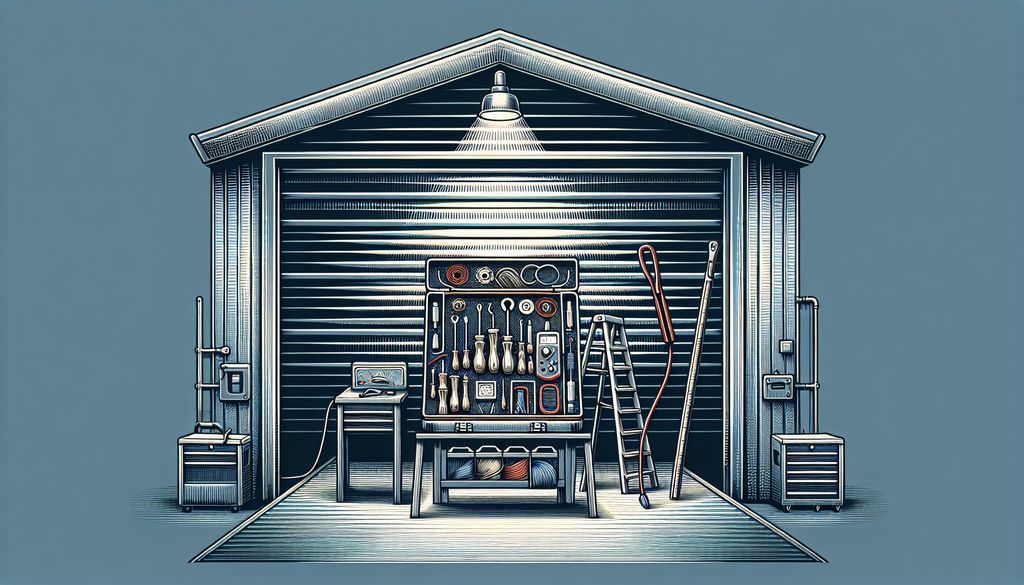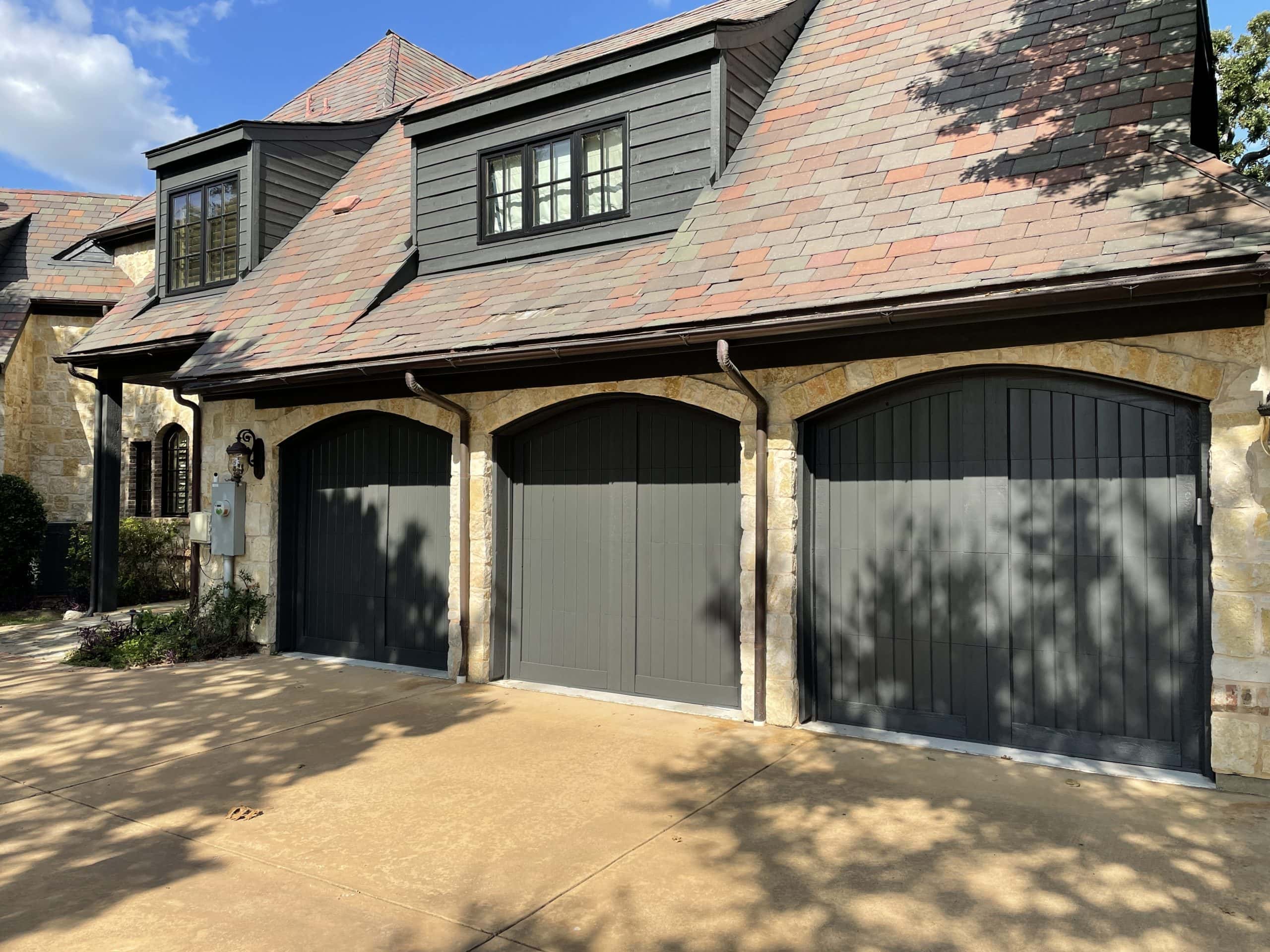Here is a comprehensive resource for homeowners looking to troubleshoot and repair their garage door openers. From understanding how garage door openers work to programming and preventive maintenance, this guide covers it all. With expert advice and detailed instructions, you’ll be equipped to handle common garage door opener issues and perform DIY repairs with ease. Let’s dive in and conquer your garage door woes!
Key Takeaways
- Regular inspection is crucial for preventing costly garage door repairs.
- Understanding the components of your garage door opener simplifies the repair process.
- DIY repairs can be done with proper guidance and readily available tools.
- Programming your garage door opener is a simple home maintenance task that enhances convenience and security.
- Preventive maintenance is essential for ensuring a smooth and efficient garage door operation.
Understanding Garage Door Openers
How Garage Door Openers Work
Garage door openers are a crucial part of our daily routine, often taken for granted – until they stop working. When your garage door opener breaks, it becomes apparent how convenient it is to simply push a button and have the door open or close. Most garage door openers today use a chain, belt, or screw-drive system to raise and lower the door. These systems all have their own set of parts that can break or fail, which is where professional experience helps immensely. Book a service call today and one of our garage door specialists will determine the issue quickly. Whether it’s a problem with the controller’s antenna, circuit, or another part of the opener’s system, we will have it fixed quickly and efficiently.
Identifying Common Garage Door Opener Issues
Garage door openers are an essential part of our daily lives, providing convenience and ease of access to our homes. However, they can encounter common issues that may disrupt their operation. One of the most frequent problems is when the garage door stops halfway through opening or closing, often caused by damaged cables or inconsistent sensor operation. Additionally, intermittent operation can result from worn-out gears, poor wiring connections, or moisture damage on the sensor’s circuit board. Regular inspection and maintenance are crucial to ensure smooth and reliable performance. If you encounter any of these issues, it’s important to address them promptly to avoid further complications.
Troubleshooting Garage Door Opener Problems
One of the most frequent garage door opener problems is a malfunctioning remote. Before taking any further steps, check the batteries and ensure that the remote is accurately pointed at the opener’s sensor. If the problem persists, try reprogramming the remote following its user manual’s instructions. Another common issue is a garage door that reverses before closing fully. This problem could be caused by several factors, including dirty or misaligned sensors or an obstruction in the door’s path. Check all sensors’ alignment and clean off any dirt or debris. If this
DIY Garage Door Opener Repair
Tools Needed for DIY Repairs
While many garage door repairs require professional assistance, you can also do simple DIY repairs yourself with proper guidance and tools available readily online. Here is a general step-by-step guide for doing DIY repairs on your garage door opener: Think of the different parts of your garage door opener as a puzzle. Each piece has its role in ensuring that your opener functions correctly: the motor provides torque; the belt, chain, or threaded screw lifts or lowers the door; while sensors detect obstacles and ensure safety. Identifying each part simplifies the repair process by knowing what exactly should be tested.
Although DIY repairs can save you money, it’s important to know when to seek professional help. Some issues may be too complex or pose significant safety hazards that could cause injury if not handled properly. For instance, if your garage door opener is making grinding or scraping noises, it could indicate that the motor or gears are worn out. Attempting to repair these components without the necessary knowledge and tools can cause further damage to your opener. Another situation where professional help is required is when your opener is not responding at all. This could be due to a faulty circuit board.
Our local garage door repair service offers a wide range of garage door opener repair services. This includes repairing broken motors, replacing damaged gears and chains, fixing sensor alignment issues, troubleshooting remote controls, and more. We also offer emergency repair.
Step-by-Step Guide for DIY Repairs
While many garage door repairs require professional assistance, you can also do simple DIY repairs yourself with proper guidance and tools available readily online. Here is a general step-by-step guide for doing DIY repairs on your garage door opener: Think of the different parts of your garage door opener as a puzzle. Each piece has its role in ensuring that your opener functions correctly: the motor provides torque; the belt, chain, or threaded screw lifts or lowers the door; while sensors detect obstacles and ensure safety. Identifying each part simplifies the repair process by knowing what exactly should be tested. Our local garage door repair service offers a wide range of garage door opener repair services. This includes repairing broken motors, replacing damaged gears and chains, fixing sensor alignment issues, troubleshooting remote controls, and more. We also offer emergency repair services, so you can reach out to a specialist today. It’s a dark and stormy night, and as you pull into your driveway after a long day of work, you tap the garage door opener button, praying for the warm embrace of your safe haven. Nothing happens. Panic sets in. You press the button multiple times in frustration, but still, your garage door remains closed. If this scenario sounds all too familiar, fear not! Our team is here to help you become the hero of your household. With detailed instructions and expert advice, you’ll never have to endure a cold, rainy night outside your garage again! Let’s dive right in and start the journey towards conquering your garage door woes.
Preventive Maintenance for Garage Door Openers
Regular Inspection Routine
Beyond functionality, your garage door is a pivotal aspect of your home’s security and curb appeal. Consistent preventive maintenance is the cornerstone of preventing an unforeseen and expensive garage door repair. This guide delves into essential steps for maintaining your garage door’s smooth and efficient operation.
- Implement a routine inspection schedule for your garage door. Check for signs of wear and tear, loose hardware, and any unusual noises during operation. Early detection allows you to address issues before they escalate.
- Proper lubrication is vital for the proper operation of your garage door. Regularly apply a garage door lubricant to the rollers, springs, hinges, and other moving parts. Lubrication minimizes friction, reduces wear, and extends the lifespan of these components.
- Inspect the tracks for debris, ensuring they are clean and free from obstructions. Misaligned tracks can cause operational issues. Align them properly and tighten any loose bolts to maintain smooth door movement.
- Test the auto-reverse safety feature monthly by placing an object in the door’s path. If the door doesn’t reverse upon contact, promptly schedule professional maintenance.
- Consider scheduling annual professional garage door tune-ups. Certified technicians can identify potential issues, conduct thorough inspections, and perform adjustments to keep your door in optimal condition.
Investing time in preventive maintenance is a small effort that pays off in significant savings and peace of mind. By incorporating these key steps into your routine, you can ensure your garage door operates smoothly, avoid costly garage door repair, and extend its overall lifespan.
Key Steps to Avoid Costly Repairs
Beyond functionality, your garage door is a pivotal aspect of your home’s security and curb appeal. Consistent preventive maintenance is the cornerstone of preventing an unforeseen and expensive garage door repair. This guide delves into essential steps for maintaining your garage door’s smooth and efficient operation. Implement a routine inspection schedule for your garage door. Check for signs of wear and tear, lubricate moving parts, and tighten loose hardware. If the door doesn’t reverse upon contact, promptly schedule professional maintenance. Consider scheduling annual professional garage door tune-ups. Certified technicians can identify potential issues, conduct thorough inspections, and perform adjustments to keep your door in optimal condition. Investing time in preventive maintenance is a small effort that pays off in significant savings and peace of mind. Regular care is the key to keeping your garage door in top-notch condition. Elevate your garage door’s performance by partnering with the professionals! Discover preventive maintenance secrets to avoid costly garage door repair. Follow our guide for smooth and efficient operation. Invest in your door’s longevity today!
Programming Your Garage Door Opener
How to Program Garage Door Opener
Mastering simple home maintenance tasks can significantly enhance your daily convenience and security in today’s fast-paced world. One such skill is programming your garage door opener, which some homeowners can find daunting. Our quick guide is here to change that perception. We’ve distilled the process into easy-to-follow steps, ensuring you can program your garage door opener easily and confidently. Whether setting up a new system or reprogramming an existing one, our guide covers all the essentials, tailored to suit both novices and seasoned DIY enthusiasts. With our expert guidance, get ready to transform a seemingly complex task into a straightforward, do-it-yourself project.
- Verify Remote and Opener Compatibility
- Finding the ‘Learn’ Button
- Pairing with the Remote
- Finalizing and Testing
If your garage door opener doesn’t respond to programming attempts, start by checking the power source to ensure it’s connected. Next, inspect the remote’s batteries; they may need replacement. If these basics are in order, reset the opener by pressing the ‘Learn’ button and following the manufacturer’s instructions. Once reset, repeat the programming process and allow the programming to complete. Then, test the remote by pressing the ‘Open’ button again. If the garage door responds correctly, congratulations, you’ve successfully programmed your garage door remote. For assurance, open and close the door several times to confirm the programming’s effectiveness.
Reprogramming an Existing Garage Door Opener
Mastering simple home maintenance tasks can significantly enhance your daily convenience and security in today’s fast-paced world. One such skill is programming your garage door opener, which some homeowners can find daunting.
Our quick guide is here to change that perception. We’ve distilled the process into easy-to-follow steps, ensuring you can program your garage door opener easily and confidently. Whether setting up a new system or reprogramming an existing one, our guide covers all the essentials, tailored to suit both novices and seasoned DIY enthusiasts.
- For reprogramming challenges, refer to the manufacturer’s instructions for your model.
- If reprogramming doesn’t work, the remote may need resetting or, in some cases, replacement.
- Regular testing and maintenance of the remote can preempt many of these issues.
Successfully programming your garage door opener involves checking remote compatibility, locating the ‘Learn’ button, pairing it with the remote, and testing the setup. For issues, check power connections, battery health, and sensor alignments.
Meadows Garage Doors excels in providing expert guidance and high-quality service for all your garage door needs. Contact us for personalized assistance and reliable solutions.
Frequently Asked Questions
What are the common issues with garage door openers?
Common issues with garage door openers include broken motors, damaged gears and chains, sensor alignment issues, and remote control troubleshooting.
Can I repair my garage door opener myself?
While some DIY repairs are possible, complex issues such as motor and gear problems may require professional assistance to avoid further damage.
What tools do I need for DIY garage door opener repairs?
You will need basic tools such as screwdrivers, pliers, wrenches, and possibly a multimeter for electrical testing.
How often should I inspect my garage door for maintenance?
It is recommended to perform a routine inspection of your garage door at least once every three months to check for signs of wear and tear.
What are the key steps to avoid costly garage door repairs?
Consistent preventive maintenance, regular inspection routines, and prompt professional assistance for complex issues are key steps to avoid costly garage door repairs.
How do I program my garage door opener?
Programming a garage door opener involves following the manufacturer’s instructions for setting up a new system or reprogramming an existing one.












